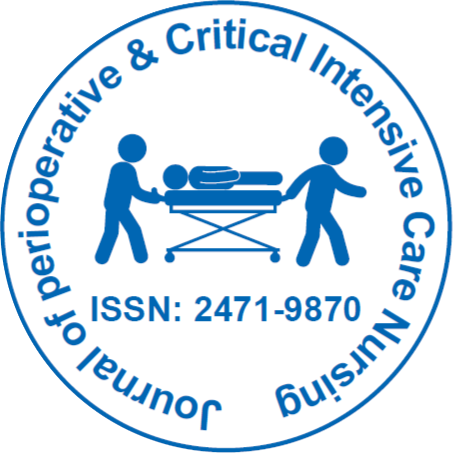
Journal of Perioperative & Critical Intensive Care Nursing
Open Access
ISSN: 2471-9870
+44-77-2385-9429

ISSN: 2471-9870
+44-77-2385-9429
Opinion Article - (2024)Volume 10, Issue 3
Telemonitoring is the process of gathering and sending patient health data to healthcare providers via electronic equipment. Vital indications including blood pressure, heart rate and glucose levels can be included in this, along with information from wearable technologies. By facilitating remote monitoring, telemonitoring allows healthcare professionals to assess a patient’s condition without the need for in-person visits, making it an invaluable tool for managing chronic diseases and postoperative care.
Benefits of telemonitoring
One of the most significant advantages of telemonitoring is improved access to healthcare. Patients in rural or underserved areas can receive timely care without the burden of travel. For elderly patients or those with mobility challenges, this is very helpful. Furthermore, telemonitoring promotes early intervention; providers can quickly identify concerning trends in a patient’s health data, allowing for prompt adjustments to treatment plans and potentially preventing hospitalizations.
Additionally, telemonitoring fosters patient engagement and empowerment. Patients are often more involved in their own care when they have access to their health data, leading to better adherence to treatment plans and healthier lifestyle choices. This active participation can improve overall health outcomes and enhance patient satisfaction.
Challenges in implementation
Despite its numerous benefits, the implementation of telemonitoring is not without challenges. One major hurdle is the need for robust technological infrastructure. Both patients and healthcare facilities must have access to reliable internet and devices capable of supporting telemonitoring applications. Moreover, not all patients are tech-savvy, which can create barriers to effective use.
Privacy and security concerns also pose significant challenges. The transmission of sensitive health information necessitates stringent data protection measures to prevent breaches and ensure compliance with regulations like HIPAA. Telemonitoring programs cannot be successful unless patients have confidence in the security of their information. Addressing these challenges through targeted education, user-friendly technology and robust security protocols is essential for the successful adoption of telemonitoring in healthcare.
Future prospects
The future of telemonitoring appears promising, particularly as technology continues to advance. Innovations such as artificial intelligence and machine learning are poised to enhance the capabilities of telemonitoring systems. These technologies can analyze vast amounts of health data, offering predictive insights that help healthcare providers make informed decisions more rapidly. Additionally, the integration of wearable devices will enable continuous patient monitoring outside traditional healthcare settings, improving access to care and facilitating early intervention.
As telemonitoring becomes more sophisticated, it has the potential to enhance patient engagement and empower individuals to take an active role in managing their health. This evolution could lead to improved outcomes and reduced healthcare costs, transforming how care is delivered. Further more, the COVID-19 pandemic has prompted a greater uptake of telemonitoring and other telehealth systems. This shift has prompted regulatory changes that may lead to more permanent integration of telemonitoring into standard healthcare practices.
Telemonitoring is a game-changer in healthcare, offering significant benefits in terms of accessibility, patient engagement and early intervention. While challenges remain, ongoing technological advancements and evolving regulations are likely to enhance its implementation and effectiveness. As the healthcare landscape continues to transform, telemonitoring will play an increasingly vital role in delivering high-quality, patient-centered care. Moreover, the ability to collect real-time data can empower healthcare providers to tailor interventions more effectively, leading to improved health outcomes.
Citation: Hojin M (2024). Optimizing Health Condition Management: The Impact of Telemonitoring on Patient Engagement. J Perioper Crit Intensive Care Nurs.10:264.
Received: 27-Aug-2024, Manuscript No. JPCIC-24-34558 ; Editor assigned: 29-Aug-2024, Pre QC No. JPCIC-24-34558 (PQ); Reviewed: 12-Sep-2024, QC No. JPCIC-24-34558 ; Revised: 19-Sep-2024, Manuscript No. JPCIC-24-34558 (R); Published: 26-Sep-2024 , DOI: 10.35248/2471-9870.24.10.264
Copyright: © 2024 Hojin M. This is an open-access article distributed under the terms of the Creative Commons Attribution License, which permits unrestricted use, distribution, and reproduction in any medium, provided the original author and source are credited